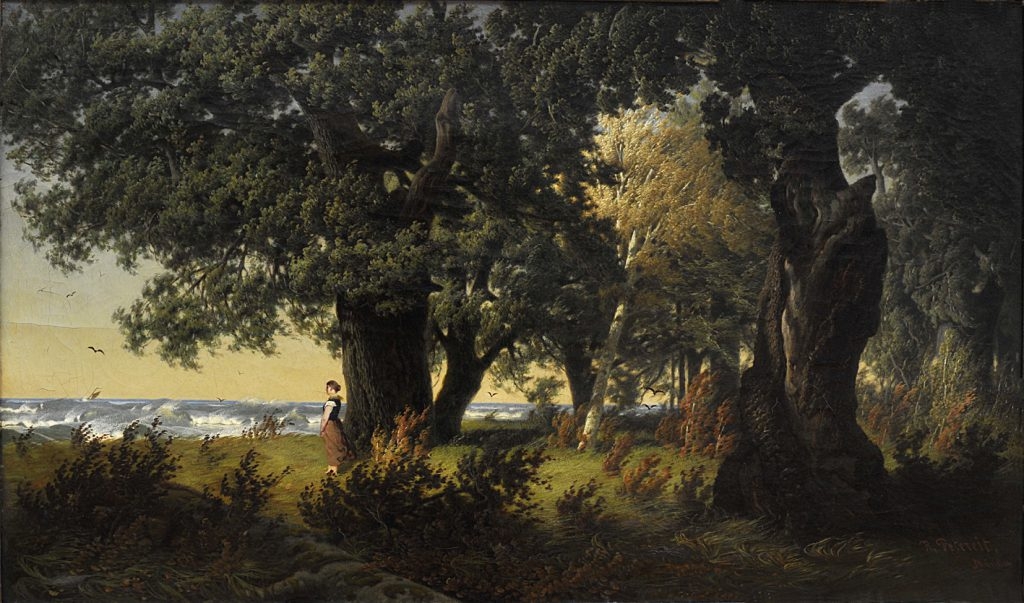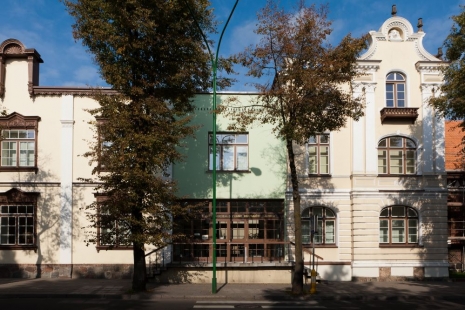Aleksandr Popov, the chair and an active member of the Society, has been collecting paintings related to East Prussia for almost a decade. The collection has nearly 1,000 works of fine art and graphic art by almost 300 painters. Nidden promotes and presents its collection to the public, and it also organizes exhibitions – with over ten held so far in Nida, Rusnė, Kaliningrad (Russian Federation), Klaipėda, Kaunas and Vilnius. The success of and public involvement in the exhibitions, and the information and experience gained while searching for new works served as encouragement for the Nidden Society to release an educational publication – The Journey to the Prussian Barbizon, based on Popov’s collection of paintings.
Members of the Nidden Society have drawn-up a list of painters: over 400 that created works in East Prussia. Popov’s collection is continually updated by paintings and graphic art works, and newly purchased items are awaiting research and revision of dates and authorship.
The fine art of East Prussia reflected many international cultural connections, interweaving many styles and trends of European art. Due to the complicated history of the region, many artists were forgotten, many works were lost, some became private property, and only a few ended up in museums. Thus, Popov’s collection is valuable not only aesthetically, but also historically and educationally.
Over 100 artists are presented in the exhibition, and over 200 paintings and graphic art works are to be displayed. They were created in the 19th century and in the first half of the 20th century, during the blossoming of fine art in East Prussia, when the region was a centre of attraction for many painters.
These oil, tempera, water colour and pastel paintings, prints made using various graphic art techniques, drawings and reproductive prints represent the most significant phenomena of fine art history in East Prussia – the Königsberg Art Academy and the Artists’ Colony of Nida (Nidden), as well as the works of painters that were born, permanently lived or occasionally visited this region.
The exhibition is mainly composed of landscapes that depict the motives of various East Prussian locations (the coasts of the Semba peninsula, the Vistula lagoon, the Curonian Spit and others). These landscapes reveal the beauty of forests, fields, waters and dunes – sometimes severe, sometimes mysterious or remarkably explicit. In addition to the landscape works there are also figural compositions, still life works and portraits.
Artists from the 19th to the first half of the 20th century often changed their place of residence and were not afraid of taking long journeys. The biographies of local and arrived artists feature cities and countries where the artists spent time learning, studying, holding exhibitions, and in the works we see motifs reminiscent of other countries, alongside images of East Prussia. The characteristic mobility of artists from this period, their exchange of ideas, and the recognition of new art styles contributed to the variety of East Prussian art and its popularity far beyond the country’s borders.
The spectrum of the styles of work in the exhibition is very wide: from Academism, sentimental Realism, late Impressionism, and Naturalism, to Expressionism and New Objectivity. Some works, created in the second half of the 20th century and which represent late Expressionism, reveal a phenomenon of East Prussian fine arts post-1945: unable to return to their beloved places, painters created paintings by memory, based on their impressions deep in their minds.
The eloquent works of this long-term exhibition are in the show in the gallery alongside the Pranas Domšaitis permanent collection of works, and allow us to gain a better understanding of the creative origins, influences and historical context of these painters hailing from Prussian Lithuania. Many of the artists presented in “The Wonderful Land” were contemporaries of P. Domšaitis: teachers, colleagues, friends who he studied with at the Königsberg Art Academy, painted with along the coasts of the Semba peninsula, visited the Curonian Spit, and discussed art, participating in exhibitions in Königsberg, and other cities of Germany and Europe.
Kristina Jokubavičienė





